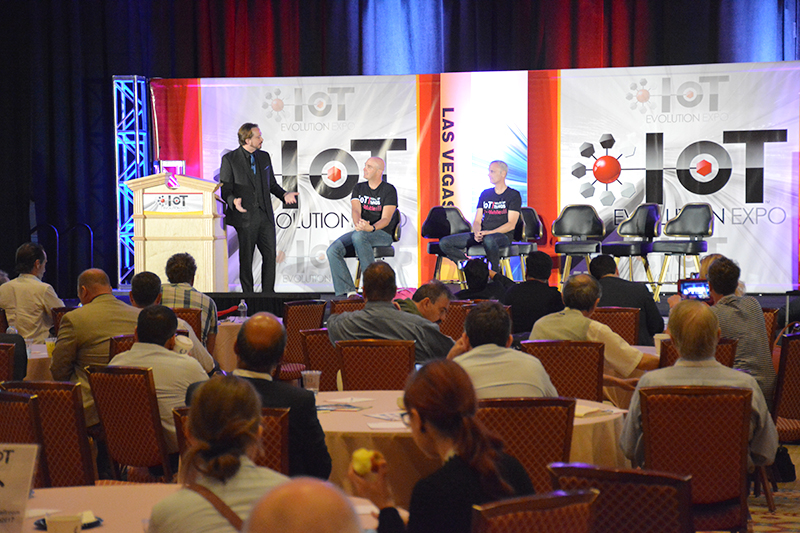Hoa Nguyen, Metcal's CTO recently attended the IoT Evolution Expo, a meeting of the world's IoT experts. We asked him to tell us what he learned. Thankfully, Hoa helps us out by starting with the basics.
What is The Internet of Things?

devices which enable these objects to not only collect and exchange data but also to be sensed
and / or controlled remotely across existing network infrastructure to have in-depth survey
analysis of current strategies and future trends for embedded analytics across both
organizational and technical dimensions including organizational culture, infrastructure, processes and traceability.
What has happened in the past?
In reality, many companies have been doing IOT for years. They have been networking devices
for a long time and collecting data from remote nodes. This is nothing new, but what the IoT
movement brings to the table is technologies that are much lower cost, more robust, secure
and standardized. In fact, OK International has successfully developed a patented ESD
measurement and monitor system which was installed at Huawei and Seagate worldwide back
in the early 2000s.
What is going to happen in the future?
According to a recent survey from 7401 visitors came from 90 countries. Nearly $6 trillion USD
will be spent on IoT solutions over the next five years. 2516 buyers are looking for IoT turn-key
solutions. 6364 of visitors were sourcing new suppliers and researching new products for their
business. 3818 of these had a budget in excess of $100K USD.
By 2020, there will be more than 80 billion connected devices. IoT is expected to generate
economic benefits between $4 trillion USD to $11 trillion USD globally by 2025.
IoT is quickly gaining momentum with the healthcare industry. The firm anticipates IoT
spending the health care provides to go well over $500M USD in 2016, and grow at 18.7%
(CAGR) between 2016 and 2020. IoT-enabled solutions are emerging fastest in tracking and
monitoring patients and “smart” systems for pharmacy management.
Consumer Electronic Products, Vertical IoT Application, are beginning to take greater shape in
2017 that includes IoT features such as smart office and home with networked climate controls,
appliances and utilities to improve energy consumption and security. Smart refrigerators that
re-order products when you are low on inventory from sites like Amazon.
Besides the vertical development of IoT solutions, marketplaces are also building momentum
toward greater adoption this year offering companies the option to connect and interact with a
wide range of vendors without having to create or change existing platforms.
The term “Industrial IoT” is for industrial tools and products such as soldering system,
dispenser, etc. Although this segment has not grown significantly, experts are expecting a big
jump by 2020 due to industrial MES / MOM requirement.
IoT is Happening Now
Here is a broader feedback format that I got from a different group with more than 350
respondents primarily located in North America. More than ¾ of survey respondents indicated that they are either working or will begin working on IoT this year.
Why IoT?
1. To make money
2. To save money
3. To comply with rules and regulation
Connectivity Preference
1. Wi-Fi
2. Cellular

Goal of IoT Initiatives
1. 45% said grow the business
2. 43% said reduce cost
3. 12% said regulation and compliance
Are IoT initiatives delivering on Business Objectives?
1. 52% said meeting objectives
2. 26% said exceeding objectives
3. 21% said underperforming objectives
Challenges with Data and Analytics
2. Analytics capabilities
Outputs from IoT Analytics
- Dashboards
- Alert and notification
- Operational reporting
- Predictive analytics
- Geospatial analytics
- Time series analytics
- Pattern recognition


